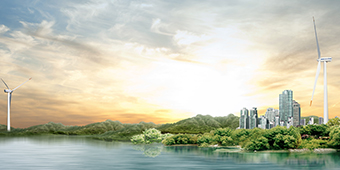ESS Business
We seek to establish an environment which will keep nature and our customers fulfilled.

Reliable energy supply
ESS is a system that improves energy efficiency by storing the excess of energy generated during the daytime and supplying it when power is in short supply. Currently, there is a growing demand for ESS because renewable energy sources face a series of problems associated with an unreliable power generation and supply that negatively affects the reliability and credibility of the entire power grid.
The market is expected to be formed and divided into several sections, including the automotive power supply market, the new and renewable energy market, and the arbitrage market.
Business Procedures
-
STEP 01
ESS business feasibility review
-
STEP 02
Transmission capacity analysis of the interconnected systems
-
STEP 03
ESS capacity and economic feasibility review
-
STEP 04
Construction design and establishment works
-
STEP 05
PV-connected ESS construction works
Business Goals
-

Power quality improvement
Improve power quality by minimizing the output fluctuations of PV power plants arising from the fluctuating levels of sunshine and a dependence on the daytime or nighttime.
-

Secure economic feasibility
Address power capacity shortage issues and ensure the economic feasibility of the distribution grid by storing an excess of power during the daytime and transmitting it during the time windows when power demand is high.
-

Secure stability
Implements a system that can utilize real-time monitor batteries in operation and take the measures against any abnormalities through remote control.
Advantages of the Energy Storage System (ESS)
-

Large-scale power generation and storage
-

Power quality improvement by stabilizing the output of power plants
-

Efficiency improvement due to the reduced power peak load
-

Power generation profits improved by REC weight factors
ESS Structure

ESS components
-
PMS
Power Monitoring System
Monitors and controls batteries and the PCS status
-
PCS
Power Conversion System
Conversion device for charging and discharging power generated by solar power
-
BATTERY
Power storage device
Device for storing electric power generated by solar power
-
BCP
Protects batters when an abnormal operation occurs
PV-connected ESS

Revenue of the New ESS Power Generation Business Operators
| Division | REC Weight factor | Subject energy sources and standards | |
|---|---|---|---|
| Type | Detailed criteria | ||
| PV power | 1.2 | When installed at general-purpose sites | Less than 100kw |
| 1.0 | 100kw or higher | ||
| 0.7 | Over 3,000kw | ||
| 1.5 | Over 3,000kw | 3,000kw or lower | |
| 1.0 | Over 3,000kw/td> | ||
| 1.5 | When installed in a floating state on the water surface | ||
| 1.5 | When power trading occurs using private power generation units | ||
| PV+ESS | 5.0 | ESS facilities (connected to PV) | 16,17 |
※The payback period for PV systems is about nine years. / The payback period for PV+ESS systems is seven years (shorten by two years).



